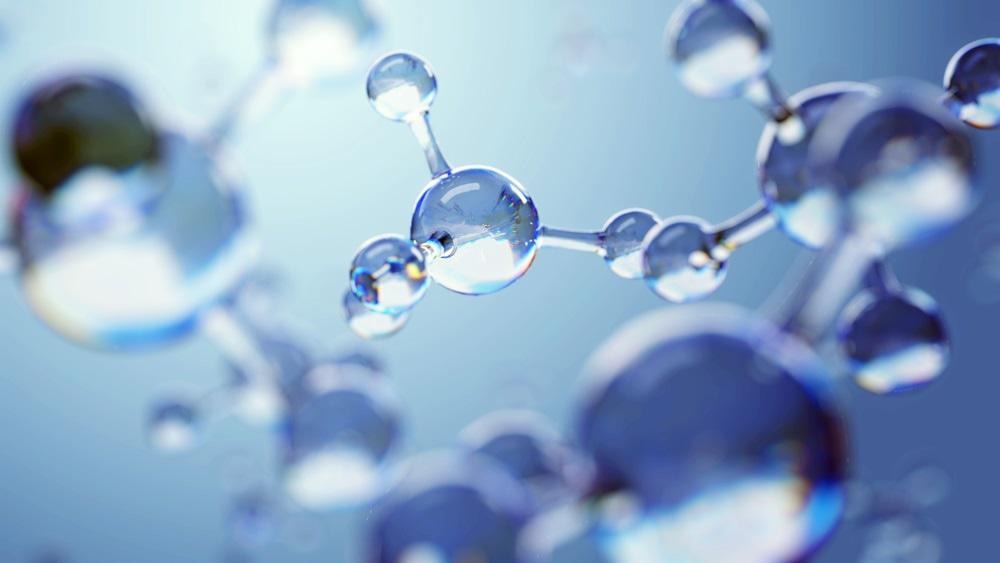Container-molecules have become attractive to Chemists as they possess unique structural characteristics which are comparable to enzymes and receptors found in nature. Such molecules are produced through coordination-driven self-assembly approaches, and a team of Researchers from China have synthesized a family of artificial self-assembled macrocyclic containers which respond to anionic guests through induced-fit transformations.

Image Credits: Egorov Artem/shutterstock.com
Coordination-driven self-assembly reactions have become a very convenient bottom-up method to produce functional molecular assemblies. Using this approach, multiple 2D and 3D structures have been produced as the process involves a simple design procedure combining the ligands and metal ions in such a way that the macromolecule can modulate guest molecules through encapsulation approaches. Two common mechanisms utilize the photoelectric properties and/or the reactivity of the guest molecule.
Molecules built up in this way generally use flexible ligands as their natural counterparts (i.e. enzymes) favor flexibility over rigidity because it allows the active site to be reshaped on demand by guest molecules- a mechanism known as the induced-fit mechanism. So, to mimic these natural structures, this synthetic approach generally avoids using rigid ligands.
One key application for these molecules is as anion receptors. This field has seen great advances in the last few decades and is set to expand even further in the future as it becomes more cross-disciplined with the biological sciences.
The Researchers have presented an artificial assembly system featuring both adaptive self-assembly and induced-fit transformation properties when in the presence of anionic guest molecules. The family of macromolecules have a general formula of PdnL2n, where L is the ligand and n is equal to a number between 3 and 7.
The macromolecules were formed using wet chemical techniques and were built up from a base molecule consisting of a single ligand and square planar Pd2+ ions. The Researchers used many techniques to characterize their macromolecules, including diffusion-ordered (DOSY) and proton (1H) NMR spectroscopy (Bruker-BioSpin AVANCE V HD 400 MHz spectrometer), mass spectroscopy (Bruker Impact II UHR-TOF) and X-ray diffraction (XRD, BL17B macromolecular crystallography beamline, SSRF).
The interaction between the hydrogen bonds at the inner surface of the macrocycle and the anionic guest produces the final shape and size of final product. The in-situ anion-adaptive self-assembly mechanism were found to give rise to a macrocycle containing 3, 6 or 7 n units, whereas post-synthetic transformations, including an induced-fit transformation process, from other macrocycles were employed for macrocycles containing 4 or 5 n units.
The most stable complex was found to be (Mo7O24)@Pd5L10 and could be easily obtained by adding (t-Bu4N)6Mo7O24 to four of the other macrocycles produced. Unlike many of the other complexes, once formed, it will not transform into any other type of macrocycle.
For the formation of these complexes, the strength of the guest ions and their templating effects were mapped to show which form the most stable complexes. The Researchers deduced the sequence of templating-effects to be Mo7O246- > NO3- >SO42- >BF4- >PF6- = OTf-.
The formation of stable Pd5L10 complexes were also found to be synthesized from NO3- anions, i.e. in short, the two best anionic guests were able to form very stable complexes with Pd5L10 (and other) host macrocycles. It was also shown that from the Pd7L14 to the Pd3L6 complexes, there was a gradual ring-shrinking mechanism in play.
Many of the complexes were formed using NO3- ions. The Researchers have suggested that the NO3- ions act as a hydrogen bonding anchor which pulls together the Pd2L2 moieties into the complex’s framework. Other PdnL2n units can be pulled together, especially the larger ones which contain 6 and 8 palladium ions, but this mainly rings true for units which have an even number of palladium ions as it maximizes the amount of hydrogen bonds linked to the chemical anchors. The resulting macrocycles formed a donut-like shape with tuneable hydrogen-binding cavities.

 Request More Information About Instrumenation
Request More Information About Instrumenation
The Researchers have created a macrocycle class which can mimic the effects of those seen in nature and could be a very powerful tool in the future for both catalysis and molecular sensing applications.
Sources and Further Reading
- “Adaptive self-assembly and induced-fit transformations of anion-binding metal-organic macrocycles”- Zhang T., et al, Nature Communications, 2017, DOI: 10.1038/ncomms15898
Disclaimer: The views expressed here are those of the author expressed in their private capacity and do not necessarily represent the views of AZoM.com Limited T/A AZoNetwork the owner and operator of this website. This disclaimer forms part of the Terms and conditions of use of this website.